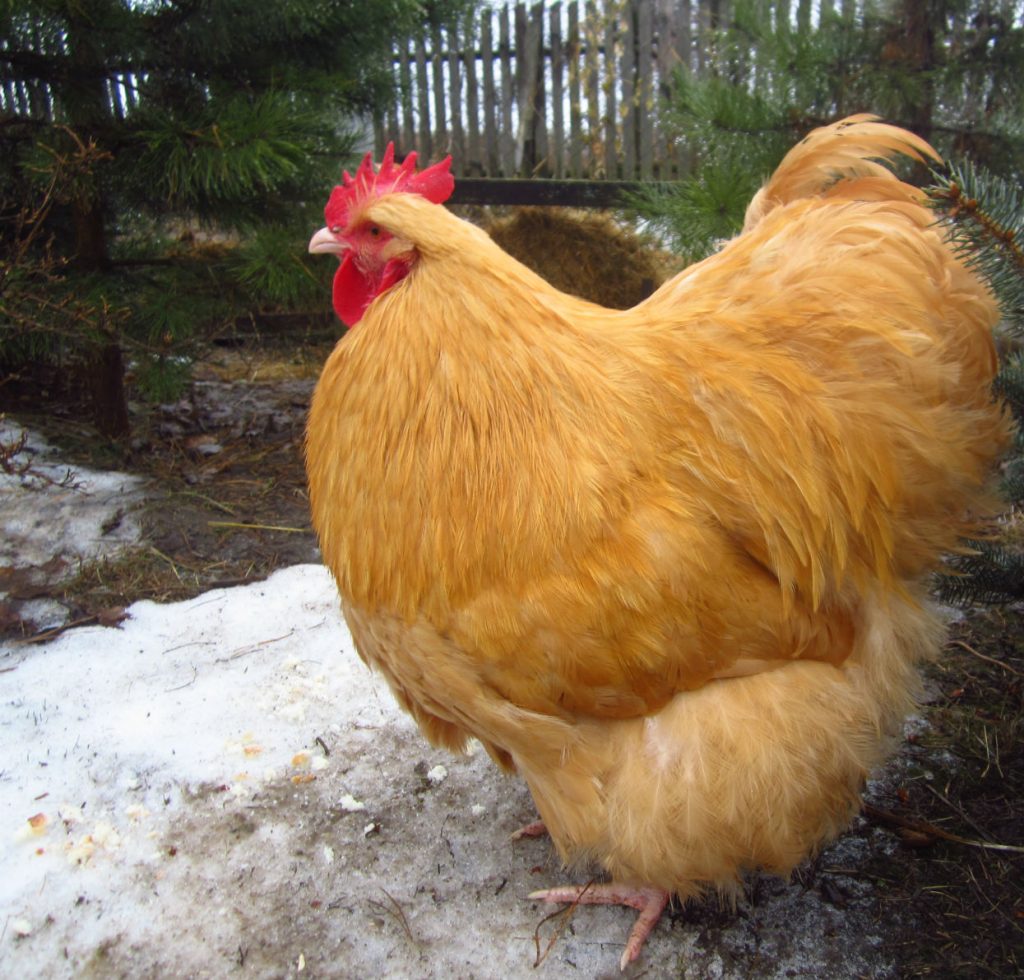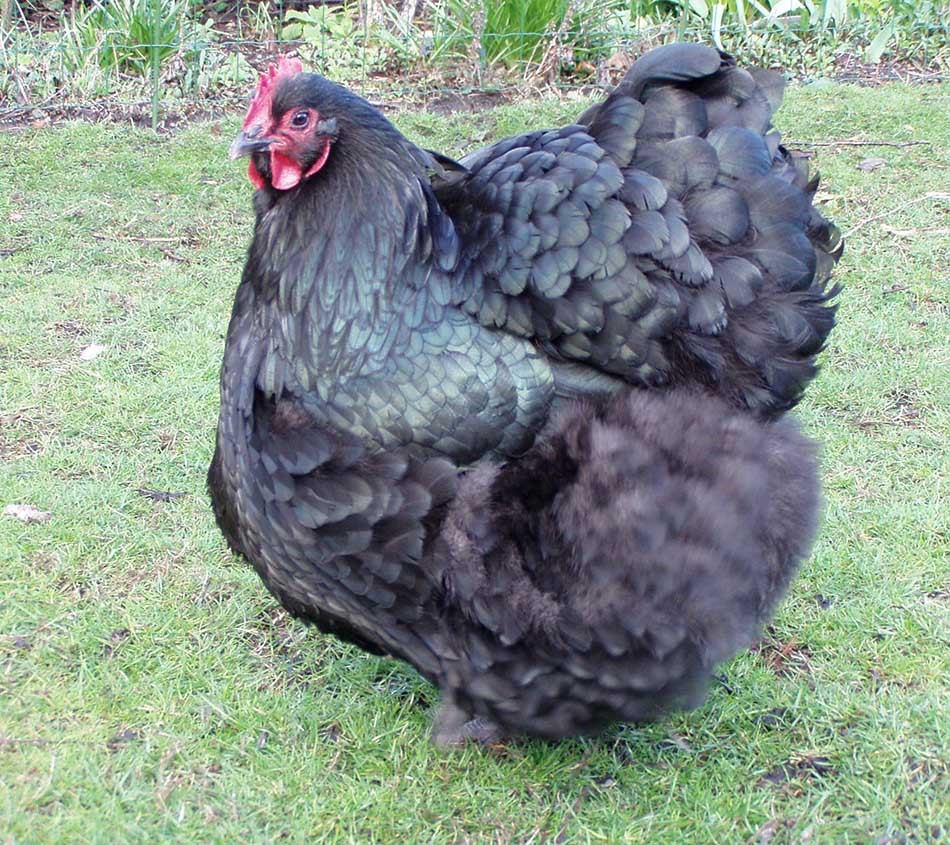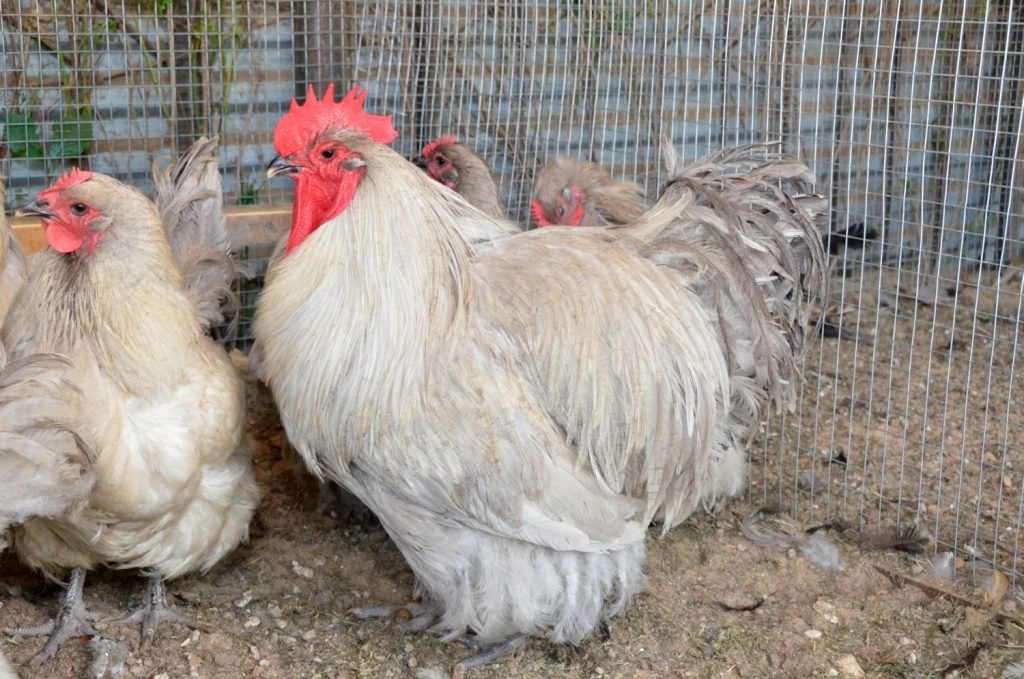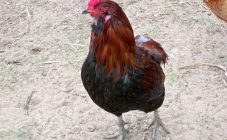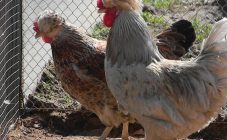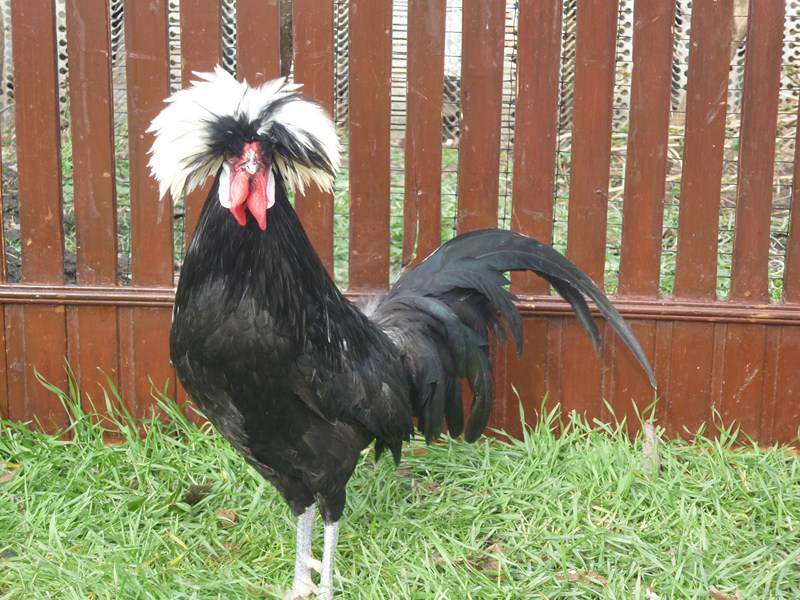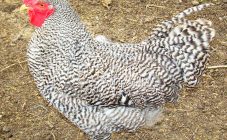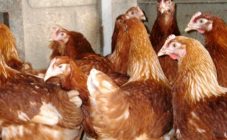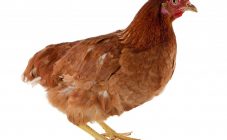Content:
Although many farmers prefer to breed chickens with egg or meat productivity, it is most beneficial to have a breed of chickens in their backyard, the productivity of which combines both high egg production and good body weight gain.
One of the most popular beef breeds is the Orpington chickens, which are raised by poultry farmers around the world. Their high performance indicators, resistance to various climatic conditions are noted by many farmers. These and other positive qualities of the breed will be discussed below.
Breeding history
Breeders from the city of Orpington (southeast of Great Britain) have been developing a new beef breed since the last decades of the 19th century. But at the same time, the scientist William Cook was engaged in the creation of the Orpington breed - he decided to bring out a qualitatively new meat-and-meat breed of chickens that would meet the standards of the English poultry industry of that time. English gourmets believed that a chicken's skin should not have a yellowish tint, but pure white, so Cook set out to breed just such poultry. Naturally, at the same time they had to have a high rate of meat productivity.
The following highly productive breeds of those times were taken as a basis:
- Plymouthrocks;
- Minorques;
- Crowde Langshan.
Only the first period of breeding new individuals lasted more than 28 years, and further work was carried out after the death of W. Cook.
The Orpington breed of chickens that this breeder created had black plumage, and the Orpington rooster could have different types of scallops. Therefore, in the future, breeders continued to work on improving the breed, ensuring that all offspring showed the same stable standard traits.
Orpingtons were crossed with the Black Cochinhin breed, and the individuals that were obtained as a result of such experiments were later presented as the classic representatives of the new breed.
English farmers appreciated the new chickens and were actively engaged in breeding them, because the Amperton chickens had a very high productivity (at that time), had an unusual appearance and had a number of other positive qualities.
Subsequently, breeders bred Orpington fawn (or yellow) chickens. They differed from the classic variety only in the color of the plumage, and the rest of the indicators were no worse. At the end of the 19th century, another variety of this breed appeared - White Orpington, which was bred through crossing with the Leghorns.
At the beginning of the 20th century, the breeding of this breed was started in Germany. Specialists of this country have bred a new variety of it, with red feathers.
Characteristics and description of the breed
The story about the Orpington breed of chickens and its description should begin with external data. These meat-eating individuals look very impressive - their body is massive, has the shape of a cube, and the constitution is strong. The plumage is dense, but very loose, which gives the body additional volume.
The head is small, the Orpington roosters have erect combs that are smaller than average. The neck is medium in size with a thick mane.The back is elongated, the width is more than average, the muscles are strong, well developed. The tail is small, in males it is hidden by plaits of feathers.
The chest is powerful and wide. The wings are small in size, tight to the body. The color of the beak is determined by the color of the feathers.
The characteristics of the females do not differ from the description of the males, only the size of the females is slightly smaller. The weight of an adult male reaches 5 kg, and the weight of a female is up to 4 kg. With such a body weight, the breed does not have early maturity.
In the first year from the moment of maturity, the female lays up to 180 eggs, in the next season, egg production decreases to 140 eggs. The mass of one egg is up to 60 g, the color of the shell is soft cream or brown.
Breeding features of the breed
The poultry house must be built, taking into account the number of chickens. They should not be kept in cages, as most often Orpingtons are born for their attractive decorative appearance, and eggs and meat are an additional benefit from breeding them. If owners of poultry herd want to benefit economically from keeping these poultry, then they should focus on more productive breeds.
Ventilation should be provided in the chicken coop, several windows, perches and nests must be equipped. Feeders and drinkers are installed in a separate place. In winter, it is required to install fluorescent lamps in the room for additional illumination of the room, and, if necessary, heating devices.
The area for walking these individuals should not be large - Orpingtons are calm and not too active, so they do not need a lot of space for daytime walks. But grass is planted in the aviary, as well as sheds, under which birds can hide from the hot sun or heavy rain.
The coop is thoroughly cleaned every 7 days. The litter is changed as it gets dirty. Drinking water should be changed every day or as it gets dirty.
The amount of feed is calculated based on the chickens' appetite - it should not remain in the feeders after the birds are full. Since these chickens are prone to obesity, owners should limit single portions of food for these birds.
Many novice poultry farmers are interested in what to feed Orpington chickens? There are no special nuances in the diet of these young animals - the schedule and diet of such chickens does not differ from the feeding of young animals of other breeds.
Breed advantages and disadvantages
The main advantages of the Orpingtons:
- a large amount of meat with good taste is obtained from the carcass;
- females begin to lay eggs from six months;
- average egg production;
- well developed maternal instinct;
- calm disposition;
- unpretentious to care;
- quickly get used to life in a new place.
There are few negative qualities:
- over time, laying hens reduce egg production;
- for individuals to gain weight well, a special diet is required;
- young growth is gaining the declared mass only by the year;
- periodically it is required to buy chicks or hatching eggs from different producers.
Despite a number of disadvantages, this meat-eating breed has many advantages. Especially if you breed Orpingtons of different colors: from black and marble chickens to yellow and fawn.
